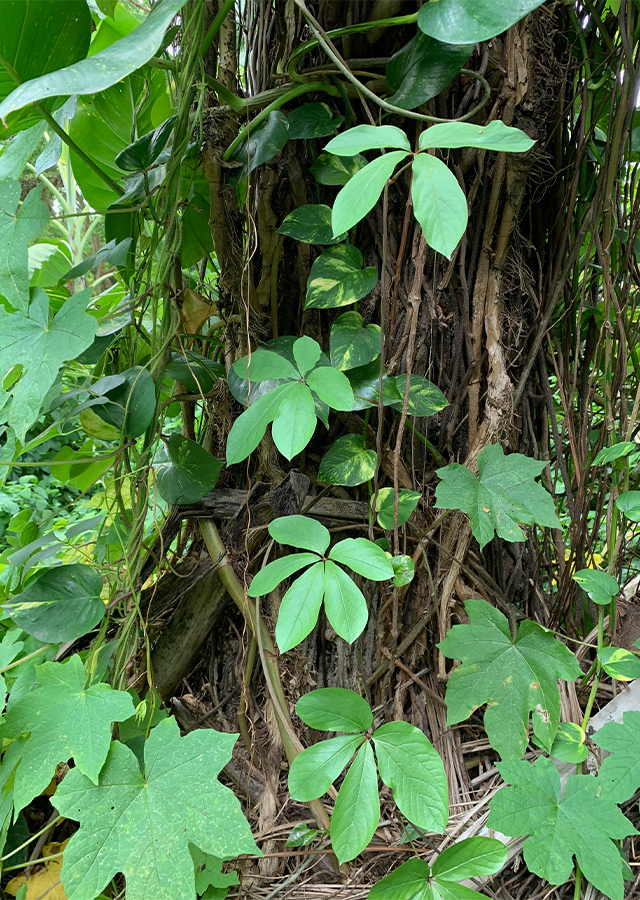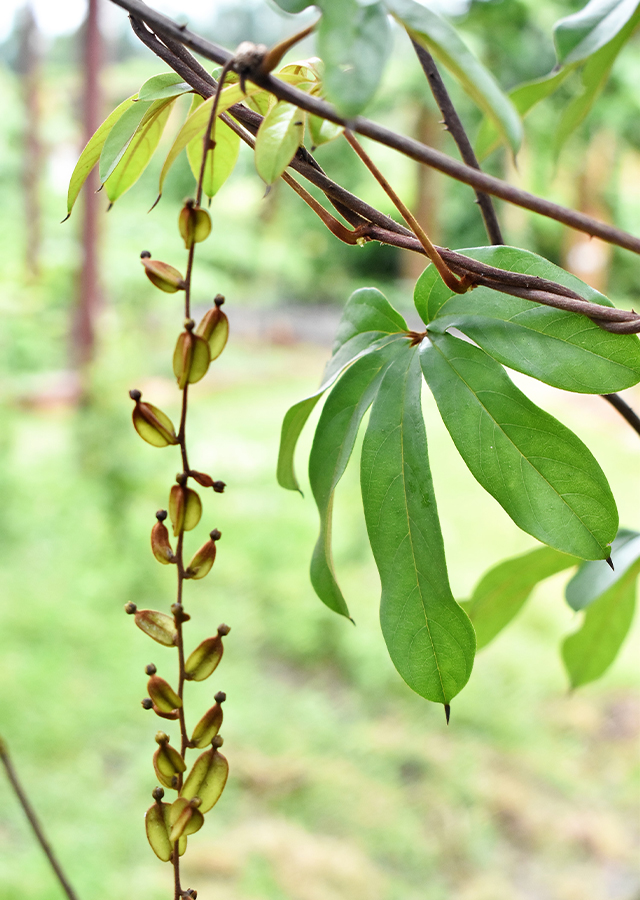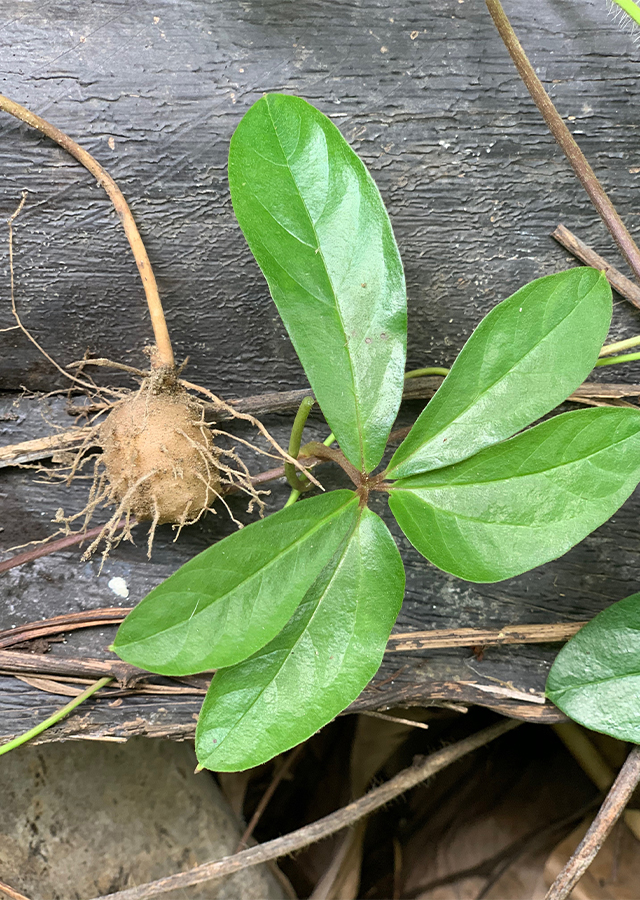Buck yam
Dioscorea pentaphylla L.
Dioscoreaceae
Location in our garden
Principal



Synonym
Botryosicyos pentaphyllus (L.) Hochst.
Dioscorea changjiangensis F.W.Xing & Z.X.Li
Dioscorea codonopsidifolia Kamik.
Habitus
Climbers. Perennial climbing plant, growing up to 4-7 m tall.
Part Used
The Whole Plant
Growing Requirements
Full Sunshine
Need Shade
Habitat
Forest
Shrublands
Overview
The species is endemic to India, Vietnam and the Philippines. In China, it has been domesticated and is used less in South-East Asia. The plant, because of its edible root, is widely grown in tropical areas of Asia. It is also harvested from the wild because it makes its production more difficult with its slender tubers.
Vernacular Names
Ubi pasir (Malaysia), Củvằn (Vietnam), Man-makmu (Thailand), Limalima (Philippines), Dâmlô:ng tük (Cambodia), Hwà 'i (Laos).
Agroecology
In lowland tropical areas or scrub forests with a temperature of around 26-34 ° c, with a welldefined dry season of 2-5 months, the plant grows best, with a total rainfall of 1,300-1,700 mm spread uniformly over the rest of the year. Deep, well-drained, sandy loam is needed for the species and is intolerant to water logging. During the early growing season, day lengths of more than 12 hours are favored as this promotes vegetative growth; day lengths of less than 12 hours will encourage tuber formation and development towards the end of the growing season.
Morphology
- Root - fibrous with irregular tubers, usually long ovoid; transverse section white when fresh.
- Stem - twines to the left, sparsely puberulent, glabrescent, prickl, with bulblets present.
- Leaves - alternate, palmately 3 to 7-foliolate; petiole 5-11 cm, densely reddish brown pubescent; leaflets ovate to lanceolate
- Flowers - both male flowers and female flowers; Male flowers: sessile or subsessile; bract and bracteole reniform, forming an involucel around perianth, Female flowers: bracts, perianth, and ovary hairy.
- Fruit - mature dark fruit capsule, ellipsoid long, 2-2.5 cm, thinly leathery, densely hairy; wing 0.5-0.6 cm wide.
- Seeds - inserted seeds near the capsule apex; wing pointing to the capsule base.
Cultivation
- Generally, not propagated by seed. A dioecious species, if seed is needed, both male and female plants need to be produced.
- Tubers' Cuttings. It is possible to split small tubers into 2-4 sections, and larger ones into 68 sections. There should be 2-3 dormant buds in each segment.
- For several hours, the cut tuber is left in the sun to encourage wound healing and decrease the risk of fungal infection.
Chemical Constituents
- Phenols/polyphenols, flavonoids, terpenoids, tannins, alkaloids and saponins.
Traditional Medicinal Uses
- Antibacterial and antifungal activity of D. pentaphylla crude extracts.
- Anti-oxidant
- The consumption of these crops might play a vital role in preventing human diseases in which free radicals are involved, such as cancer, cardiovascular disease and ageing.
- Boils are added to the juice of the plant.
- For swelling, a decoction of the plant is added.
- For the treatment of rheumatism (Chakma), a paste of leaves made with mustard oil is rubbed into the affected areas.
- Tubers are a tonic used for swelling, rheumatism, and hair washing to remove lice.
- Plant is used in dropsy and anasarca.
Part Used
Reference Sources
- Ken Fern. 2014. Dioscorea pentaphylla. https://tropical.theferns.info/viewtropical.php?id=Dioscorea+pentaphylla
- RBGKEW.2021. Dioscorea pentaphylla L. https://powo.science.kew.org/taxon/urn:lsid:ipni.org:names:318398-1

